 Solomon was born into a prominent Jewish family. He was the eighth and last child born to merchant Michael (Meyer) Solomon and artist Catherine (Kate) Levy.
Solomon was born into a prominent Jewish family. He was the eighth and last child born to merchant Michael (Meyer) Solomon and artist Catherine (Kate) Levy.
When Burne-Jones met Simeon Solomon in the late 1850s, he thought his work as imaginative as anything he had ever seen. Solomon showed precocious talent, exhibiting his first Royal Academy picture at the age of 18 in 1858. During the 1860s he was a highly influential young artist, one of the circle which was moving towards aestheticism, and which included Rossetti, Burne-Jones and the poet Swinburne. 
Solomon and Swinburne met in 1863, they became close friends and exercised a mutual influence on each other. Swinburne was at this time reading widely in classical literature including Ovid, Homer and Euripides.
 Inspired by this and by three trips to Italy between 1866 and 1870, Solomon was one of the instigators of the
Inspired by this and by three trips to Italy between 1866 and 1870, Solomon was one of the instigators of the revival of classicism in the 1860s; this aspect of his work is shown in The Little Improvisatice
revival of classicism in the 1860s; this aspect of his work is shown in The Little Improvisatice . — Peter Nahum.
. — Peter Nahum. His father Michael (Meyer) Solomon was a successful Bishopsgate manufacturer, and was one of the first Jews to be admitted to the freedom of the City of London.

Bishopsgate is a road and ward in the northeast part of the City of London, extending north from Gracechurch Street to Norton Folgate
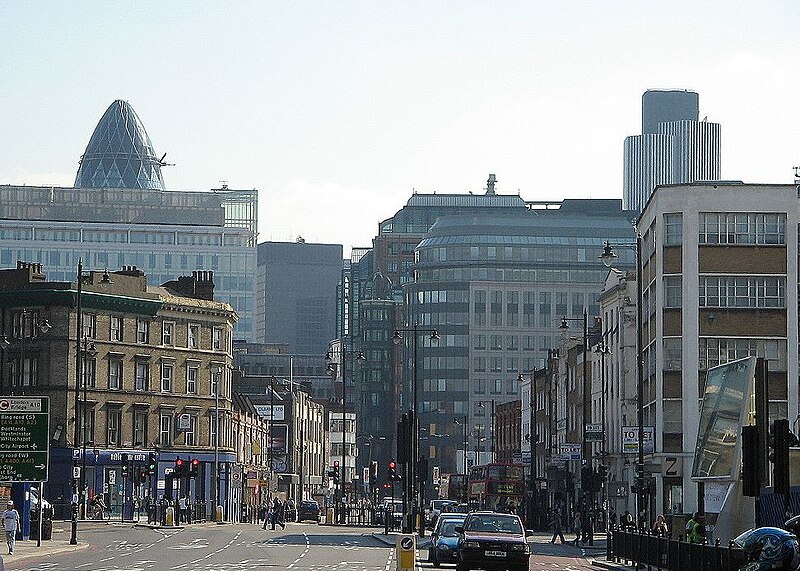 It is named after one of the original seven gates in London Wall.
It is named after one of the original seven gates in London Wall. The site of this gate is marked by a stone bishop's mitre, fixed high on the building located at the junction of Wormwood Street
The site of this gate is marked by a stone bishop's mitre, fixed high on the building located at the junction of Wormwood Street with Bishopsgate, just by the gardens there and facing the Heron Tower.
with Bishopsgate, just by the gardens there and facing the Heron Tower.
The ward (which is large by City standards) is bounded by Worship Street in the north, where the
 In the heart of materialistic mid-Victorian society a small group of painters tried to develop a symbolic art which would aspire to absolute beauty and transcend the time and place in which it was produced. Simeon Solomon's 'Night' is a product of this movement.
In the heart of materialistic mid-Victorian society a small group of painters tried to develop a symbolic art which would aspire to absolute beauty and transcend the time and place in which it was produced. Simeon Solomon's 'Night' is a product of this movement. In the 1860s Solomon was a central figure in a group which included the painters Rossetti, Burne-Jones and Whistler and the writers Pater and Swinburne. In 1873, after his career collapsed in scandal,
In the 1860s Solomon was a central figure in a group which included the painters Rossetti, Burne-Jones and Whistler and the writers Pater and Swinburne. In 1873, after his career collapsed in scandal, he worked in isolation, his historical importance unrecognised. This drawing dates from a turning point in the artist's life. Pater was among the few who attempted to remain friends with Solomon after his 1873 arrest.By 1905 most of his circ le deserted him Britain had forgotten him and that he was essentially a fallen victim of alcoholism. information from his cousin said he had been helped by his family and details about the last few months of his life as reported by people at St. Giles Workhouse. At his death was the announcement that one of his paintings (title unidentified) had recently sold at Christie's for 250 guineas.
he worked in isolation, his historical importance unrecognised. This drawing dates from a turning point in the artist's life. Pater was among the few who attempted to remain friends with Solomon after his 1873 arrest.By 1905 most of his circ le deserted him Britain had forgotten him and that he was essentially a fallen victim of alcoholism. information from his cousin said he had been helped by his family and details about the last few months of his life as reported by people at St. Giles Workhouse. At his death was the announcement that one of his paintings (title unidentified) had recently sold at Christie's for 250 guineas.edge of the City meets the London Boroughs of Islington and Hackney. It neighbours Portsoken
 ward and the London Borough of Tower Hamlets in the east. The western boundary is formed by Old Broad Street, where the ward
ward and the London Borough of Tower Hamlets in the east. The western boundary is formed by Old Broad Street, where the ward
Walter Pater
Simeon Solomon (1840-1905)
1873Pater, like the very different Swinburne, was a close friend of Solomon's
Solomon's circle was the only group of mid-Victorian artists to use allegory and personification in a meaningful and personal way. Night was an important theme for them, perhaps because night is a time of ambiguous values and visions. Simeon Solomon wrote: Night, Sleep, Death and the Stars they are the themes that I love best.' .
 (W), Cornhill (SW) and Lime Street (S) wards.
(W), Cornhill (SW) and Lime Street (S) wards.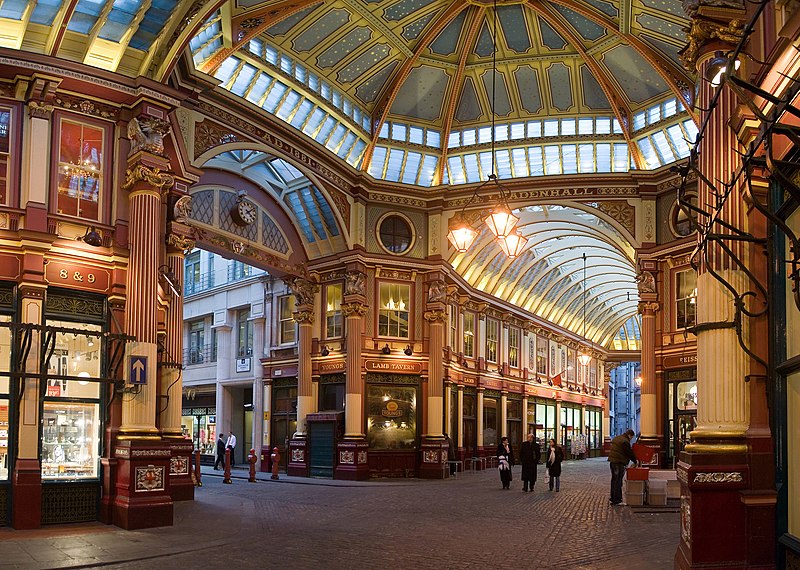 The ward straddles the (now former) line of the Wall and the old gate and is often (even today[
The ward straddles the (now former) line of the Wall and the old gate and is often (even today[) divided into "Within" and "Without" parts, with a Deputy (Alderman) appointed for each part. However, since the 1994 (City) and 2003 (ward) boundary changes, almost all of the ward is Without; only a small area surrounding the Leathersellers' Hall
 remains as Bishopsgate Within.
remains as Bishopsgate Within.
The ward previously extended much further south, along Bishopsgate and Gracechurch Street to meet Langbourn ward, but in the major 2003 boundary changes much of the Within part was transferred to Cornhill and Lime Street. No changes to Bishopsgate's ward boundaries will occur in the 2013 boundary changes.

Solomon's family arrived in England from Europe, possibly Holland or Germany, sometime at the
 end of the eighteenth century. His wife's name was Catherine (Kate) Levy, and he was the father of eight children. Three of these—Abraham
end of the eighteenth century. His wife's name was Catherine (Kate) Levy, and he was the father of eight children. Three of these—Abraham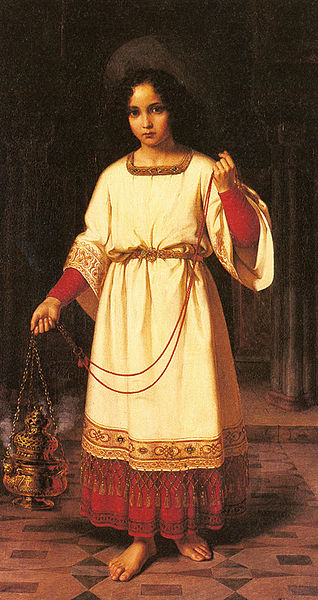 , Rebecca
, Rebecca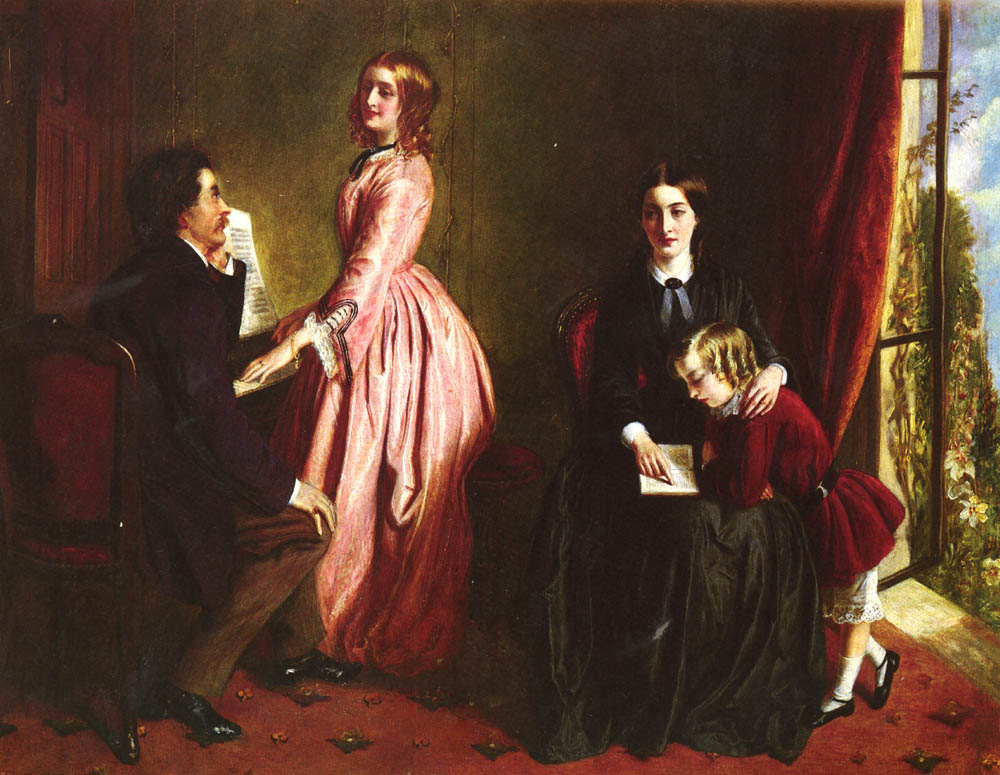 , and Simeon—became notable painters, their other children were named Aaron, Betsy, Isaac, Ellen, and Sylvester
, and Simeon—became notable painters, their other children were named Aaron, Betsy, Isaac, Ellen, and Sylvester
Solomon lived among a well established Jewish community, in No. 3 Sandys Street, Bishopsgate, London, and his considerable wealth allowed him to be accepted by London society while
 maintaining their heritage. His business concern was as a manufacturer of Leghorn hats
maintaining their heritage. His business concern was as a manufacturer of Leghorn hats Worldwide, the most valuable straw for plaits is grown in Tuscany, and from it the well-known Tuscan plaits and Leghorn hats are made. The straw of Tuscany, specially grown for plaiting, is distinguished into three grades of quality. The highest quality is Pontederas Semone,
Worldwide, the most valuable straw for plaits is grown in Tuscany, and from it the well-known Tuscan plaits and Leghorn hats are made. The straw of Tuscany, specially grown for plaiting, is distinguished into three grades of quality. The highest quality is Pontederas Semone, the second highest is Mazzuolo. The bulk of the plaits are made from this grade of straw. The third grade, is only used to plaite "Tuscan pedals" and braids. The wheat-seed for these straws is sown very thickly on comparatively elevated and arid land, and it sends up long attenuated stalks. When the grain in the ear is about half developed the straw is pulled up by the roots, dried in the sun, and subsequently spread out for several successive days to be bleached under the influence of alternate sunlight and night-dews.
the second highest is Mazzuolo. The bulk of the plaits are made from this grade of straw. The third grade, is only used to plaite "Tuscan pedals" and braids. The wheat-seed for these straws is sown very thickly on comparatively elevated and arid land, and it sends up long attenuated stalks. When the grain in the ear is about half developed the straw is pulled up by the roots, dried in the sun, and subsequently spread out for several successive days to be bleached under the influence of alternate sunlight and night-dews. 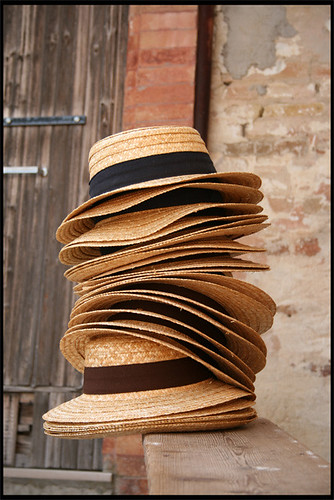 The pipe of the upper joint alone is selected for plaiting, the remainder of the straw being used for other purposes. These pipes are made up in small bundles, bleached in sulfur fumes in a closed chest; assorted into sizes, and so prepared for the plaiters.
The pipe of the upper joint alone is selected for plaiting, the remainder of the straw being used for other purposes. These pipes are made up in small bundles, bleached in sulfur fumes in a closed chest; assorted into sizes, and so prepared for the plaiters. Straw-plaiting is a domestic industry among the women and young children of Tuscany and some parts of Emilia.
Straw-plaiting is a domestic industry among the women and young children of Tuscany and some parts of Emilia.
 Tuscan plaits and hats vary enormously in quality and value; the plait of a hat of good quality may represent the work of four or five days, while hats of the highest quality may each occupy six to nine months in making.
Tuscan plaits and hats vary enormously in quality and value; the plait of a hat of good quality may represent the work of four or five days, while hats of the highest quality may each occupy six to nine months in making. The finest work is excessively trying to the eyes of the plaiters, who can at most give to it two or three hours' labor daily.Solomon was a younger brother to fellow painters
The finest work is excessively trying to the eyes of the plaiters, who can at most give to it two or three hours' labor daily.Solomon was a younger brother to fellow painters Abraham Solomon (1824–1862)
Abraham Solomon (1824–1862) and Rebecca Solomon (1832–1886)
and Rebecca Solomon (1832–1886) .
.Born and educated in London, Solomon started receiving lessons in painting from his older brother
 around 1850. He started attending Carey's Art Academy in 1852. His older sister first exhibited her works at the Royal Academy during the same year.
around 1850. He started attending Carey's Art Academy in 1852. His older sister first exhibited her works at the Royal Academy during the same year.
As a student at the Royal Academy Schools, Solomon was introduced through Dante Gabriel Rossetti
 to other members of the Pre-Raphaelite circle, as well as the poet Algernon Charles Swinburne and
to other members of the Pre-Raphaelite circle, as well as the poet Algernon Charles Swinburne and the painter Edward Burne-Jones in 1857. His first exhibition was at the Royal Academy in 1858
the painter Edward Burne-Jones in 1857. His first exhibition was at the Royal Academy in 1858 . He continued to hold exhibitions of his work at the Royal Academy between 1858 and 1872. In addition to the literary paintings
. He continued to hold exhibitions of his work at the Royal Academy between 1858 and 1872. In addition to the literary paintings 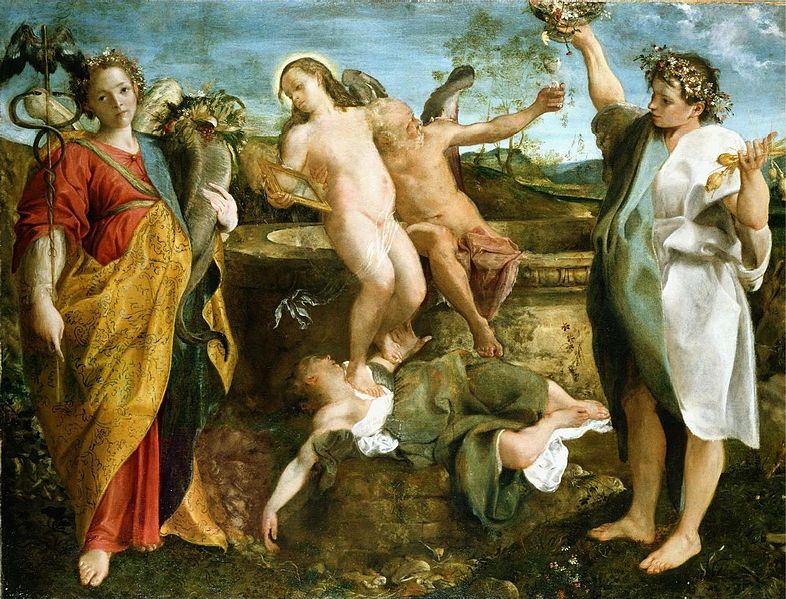 favoured by the Pre-Raphaelite school,
favoured by the Pre-Raphaelite school, Solomon's subjects often included scenes from the Hebrew Bible and genre paintings depicting Jewish life and
Solomon's subjects often included scenes from the Hebrew Bible and genre paintings depicting Jewish life and rituals. His association with Swinburne led to his illustrating Swinburne's Lesbia Brandon in 1865
rituals. His association with Swinburne led to his illustrating Swinburne's Lesbia Brandon in 1865In 1873 his career was cut short when he was arrested in a public urinal at Stratford Place Mews,
 off Oxford Street, in London and charged with attempting to commit sodomy: he was fined £100.He was arrested again in 1874 in Paris, after which he was sentenced to spend three months in prison.
off Oxford Street, in London and charged with attempting to commit sodomy: he was fined £100.He was arrested again in 1874 in Paris, after which he was sentenced to spend three months in prison.In 1884 he was admitted to the workhouse where he continued to produce work; however, his life and talent were blighted by alcoholism.
 Twenty years later in 1905, he died from complications brought on by his alcoholism. He was buried at the Jewish Cemetery in Willesden.
Twenty years later in 1905, he died from complications brought on by his alcoholism. He was buried at the Jewish Cemetery in Willesden.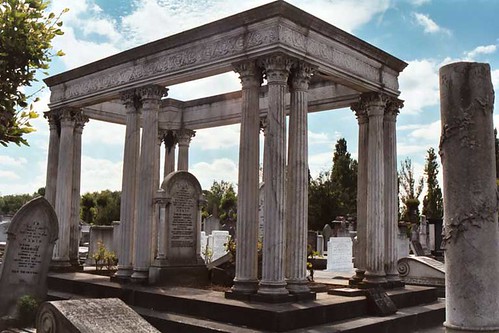
Examples of his work are on permanent display at the Victoria and Albert Museum and at Leighton House.

In 1871 Simeon Solomon privately published his prose poem A Vision of Love Revealed in Sleep which he had written in 1870. The narrative, which was of central importance to the artist's career, was based on the platonic theme of the fulfillment of the soul through earthly love. In a contemporary review, John Addington Symonds noted:
Mr Solomon's prose poem is a key to the meaning of his drawings. It lays bare the hidden purpose of the artist, and enables us to connect picture with picture in a perfectly intelligible series.... As its name implies, this prose poem has for its subject love.... Mr Solomon's Love is not classical, not medieval, not Oriental; but it has a touch of all these qualities — the pure perfection ofthe classic form, the allegorical mysticism and pensive grace of the middle age, and the indescribable perfume of Orientalism ... Added to these general qualities we trace in this spirit of love a vague yet intense yearning a "Sehnsucht", which belongs to music and is essentially modern.Just as the works of Rossetti and Burne-Jones pre-date the whole European Symbolist movement so Simeon Solomon's 'Night' anticipates the work of the Belgian Symbolist, Fernand Khnopff, by over twenty years. Solomon's friend, Algernon Swinburne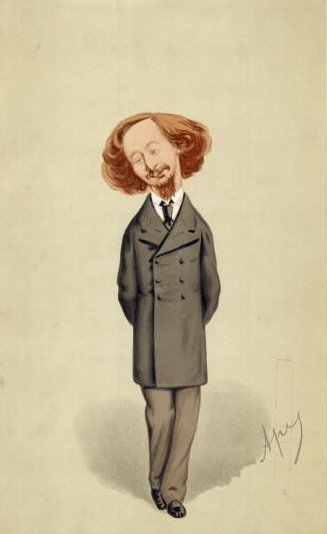 , had predicted as much in his conclusion to a long article on the artist: 'Time wears out the names of the best imitators and followers; but he whose place is his own, and that place high amongst his fellows, may be content to leave his life's work with all confidence to time.
, had predicted as much in his conclusion to a long article on the artist: 'Time wears out the names of the best imitators and followers; but he whose place is his own, and that place high amongst his fellows, may be content to leave his life's work with all confidence to time.
 , had predicted as much in his conclusion to a long article on the artist: 'Time wears out the names of the best imitators and followers; but he whose place is his own, and that place high amongst his fellows, may be content to leave his life's work with all confidence to time.
, had predicted as much in his conclusion to a long article on the artist: 'Time wears out the names of the best imitators and followers; but he whose place is his own, and that place high amongst his fellows, may be content to leave his life's work with all confidence to time.
below Simeon Solomon by Frederick Hollyer
In Anthony Powell's novel A Buyer's Market (book 2 in A Dance to the Music of Time), the narrator says of the artist Mr. Deacon that Solomon was one of the few painters he admired.

In Oscar Wilde's long prison letter to Lord Alfred Douglas, De Profundis, Wilde writes of his
 bankruptcy: “That all my charming things were to be sold: my Burne-Jones drawings: my Whistler
bankruptcy: “That all my charming things were to be sold: my Burne-Jones drawings: my Whistler drawings: my Monticelli: my Simeon Solomons: my china: my Library…”
drawings: my Monticelli: my Simeon Solomons: my china: my Library…”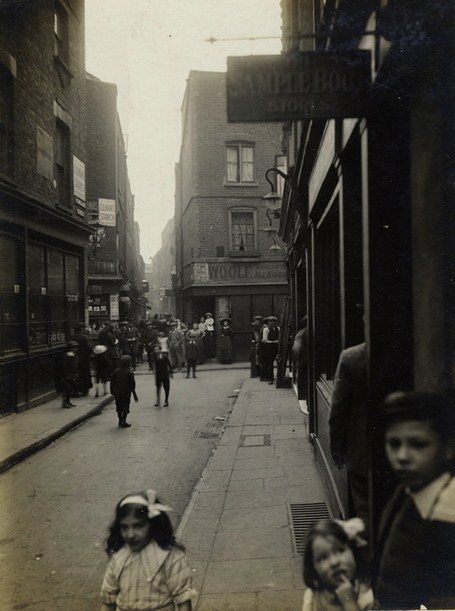



No comments:
Post a Comment